4e — Dwarfeons & Dragons
Dungeons & Dragons is a game system built around giving players a useful, handleable group of tools to build a character. You have the simplest two lego pieces to snap together; what you do (your class), and how you were born (your heritage/race). A elf fighter is not the same as a half-elf fighter is not the same thing as an orc fighter, for example. These cultural groups then let you inform the world; after all, if there are elves and orcs in the world, there are probably places that those elves and orcs grow up. And thus the player options build the world, and the world building feeds into how the player options feel.
If you have crystal cities of a floating city state full of elves, the players will get ideas for that, and how they interact with the world, based on that. If the elves live in great green forest villages that hang from the branches, that’s going to give them different ideas. And if the elves, I don’t know, come from an elf mine, that’s going to give you a different perspective.
It’s a great system. I love it. I honestly think it’s one of the best things about the game, and the fact that it gives you a pair of dials to spin serves as an onramp that almost any player can get engaged with quickly, and that serves to anchor your decisions going forwards. Great system, I think it does a great job.
Anyway, I don’t like the the Dwarf and the Dragonborn in 4th edition D&D.
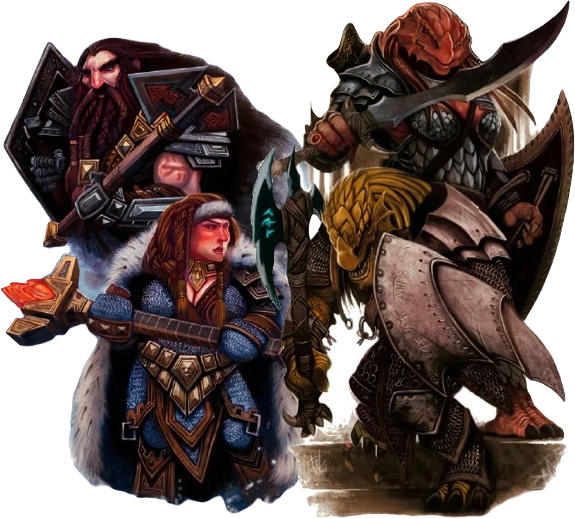
First They Must Catch Us: Reconcepting Halflings
The fire crackled, sat in the centre of the group. Four sets of boots, three large, one small, glimmered orange as the campfire’s light licked over them in pinions of orange and gold, contrasting with the deep dark of the woods, and the deep, suffusing blue of the glass-dusted sky.
“So the story goes, the story goes,” the creaky-voiced half-elf said. “Shipwrecked, they say. A crew of fifty survivors, and food enough for twenty five. They drew lots, and half the number accepted their end – casting themselves from the rocks to save the survivors the cost of them.”
“We have a story like it.” The orc said. “The strongest half went into the jungle, without any supplies, to show they were strong, and to give the weaker half the best chance to survive.”
The human pushed a stick into the fire, and shook her head. “Grim stories.”
“Stupid stories.” The fourth said. They sat forwards, their hands waving animatedly. “I don’t know about the folk of yours, but for us? We’d all find a way to do with half as much.”
“You can say that,” the half-elf started.
“Yeah. I can. And then I live it. We live it.” The Halfling gave a grim smile. “We are the ones who always survive.”
Continue Reading →The best of 2021, Part 1 – D&D
I wrote some bangers last year.
I sat down at first to give a sort of top ten articles of my own last year, that weren’t covered by specifically the header of How To Be, Game Pile or Story Pile. I tried it, and found that I had run out of slots for ‘absolute banger of an article’ in two months of summarising posts. Then I realised there were whole trends of things to write about and then I realised, hell, this is my blog, you’re here for my content, and unless you’re Vincent or Tab or Kate (hi, you three), odds are good you miss an article or three I write.
We’re going to do three of these this week. A whole bunch of bangers, divided up by the type of writing it is, and why I might want you to go reread it. First we’re going to talk about general content – stuff that I think you should link to other people outside the blog, posts that explain some complex concept in a way I’m proud, but also which doesn’t necessarily fit the other stuff.
And so here, I’m just going to bring your attention to a big pile of things I’d already written that are really good and which I know have escaped your attention, yes you, and today, it’s going to be about the Dungeons & Dragons, DMing and Worldbuilding articles.
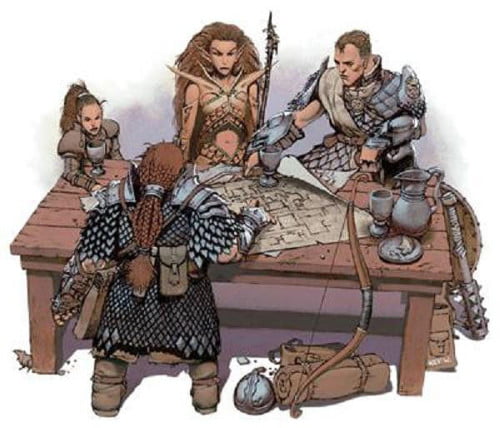
How To Be: The Covers of 2021
When I do the How To Be cover graphics, I’m also very self-impressed with them as their own jokes/visual pieces. Presented here then is a summary of 2021’s How To Be entries for the year, with an overview of what you might want to use these articles for.
Continue Reading →How To Be: Kipo (in 4e D&D)
In How To Be we’re going to look at a variety of characters from Not D&D and conceptualise how you might go about making a version of that character in the form of D&D that matters on this blog, D&D 4th Edition. Our guidelines are as follows:
- This is going to be a brief rundown of ways to make a character that ‘feels’ like the source character
- This isn’t meant to be comprehensive or authoritative but as a creative exercise
- While not every character can work immediately out of the box, the aim is to make sure they have a character ‘feel’ as soon as possible
- The character has to have the ‘feeling’ of the character by at least midway through Heroic
When building characters in 4th Edition it’s worth remembering that there are a lot of different ways to do the same basic thing. This isn’t going to be comprehensive, or even particularly fleshed out, and instead give you some places to start when you want to make something.
Another thing to remember is that 4e characters tend to be more about collected interactions of groups of things – it’s not that you get a build with specific rules about what you have to take, and when, and why, like you’re lockpicking your way through a design in the hopes of getting an overlap eventually. Character building is about packages, not programs, and we’ll talk about some packages and reference them going forwards.
Kipo and the Age of Wonderbeasts is a Netflix TV series created by Radford Sechrist that started its life as a webcomic. The series is something I’ve praised in the past as being uncomplicatedly excellent. Set in a post-apocalyptic far future populated with anthropomorphic animals, it’s a story of a journey of adventure, beset on all sides by a dangerous villain with superpowers who, if he catches our heroes, may destroy their ability to ever defy him. It’s a great adventure structure, and one you should feel free to steal, and central to it all is the character of Kipo, a girl with pink skin whose position in the story is at the intersection of multiple sequences of events, set in motion before she was even born.
And like, I don’t normally do this, but I’m going to put a spoiler warning here. If you read these articles idly, and think you’d like to watch Kipo at some point, you should go do that before reading this article, because I’m going to talk about some stuff Kipo can do that isn’t obvious from the start of the story. I mean, oh okay, shock and horror, Kipo is special, obviously, you know that and I know that just looking at the fact the series is named after her, but nonetheless, I just want you to know, going on, that there be spoilers.
Good?
Good.
Okay, onwards.
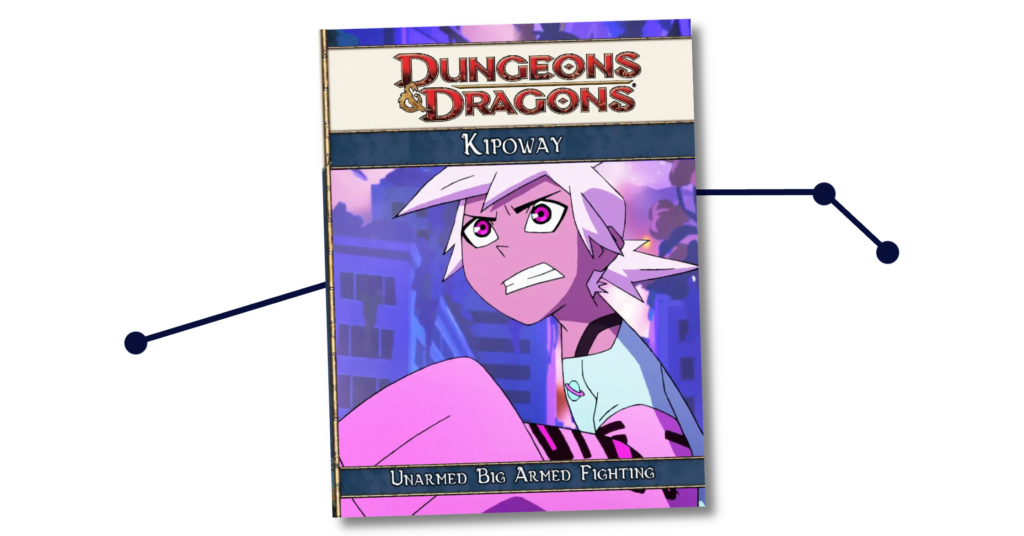
3.5 Memories: Worse Than The Fighter
In Dungeons & Dragons 3.5th Edition, a thing that’s not at all un-awkward to say, there was a set of hardbound expansion books released as a group to satisfy groupings of characters as an archetype. The first set of these, released around 2003, were The Complete Divine, The Complete Arcane and The Complete Warrior, a trio of books that kind of told you what they were about in the name. You had arcane spellcasters, divine spellcasters, and uh, everyone else, I guess.
The Complete Warrior had to bear up as the space for all the classes that weren’t divine spellcasters (but the ranger and paladin can play here too, sure) and all the characters who weren’t arcane spellcasters (but there’s stuff in here for melee spellcasters). Barbarians and Rogues and Monks all got to cram in on this book, but based on the name and the style, and of course, the preponderance of feats in this book, this is the book that’s for fighters.
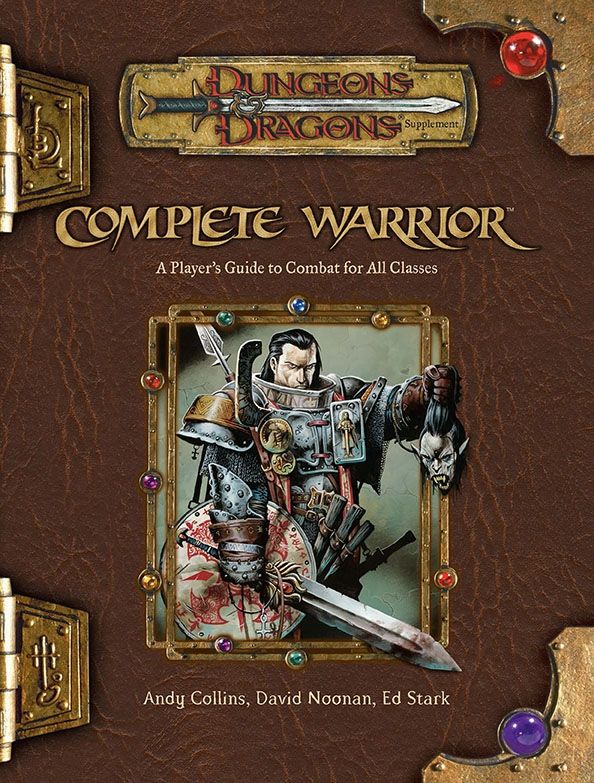
It’s also a pretty cool book, if you’re looking at the good stuff in it that you want to use and make sure people can use. LIke this book has tactical feats, a category of feat that kind of roll together a small number of ‘not enough for a full feat’ advantages into a single grouping, and that’s a really good way to expand expertise on fighters. Prestige classes in this book include the Actually Good Frenzied Berserker, the kinda decent Tattooed Monk, the sorta-maybe-why-not War Chanter, the busted as hell Warshaper and that’s four classes worth having access to in most campaigns. The excellent Combat Brute tactical feat is in here, and uh
Anyway, the point is this book is one of the books I think of pretty positively.
It’s also a book that features the rare examples of a class actively worse than the Fighter.
The ‘Samurai.’
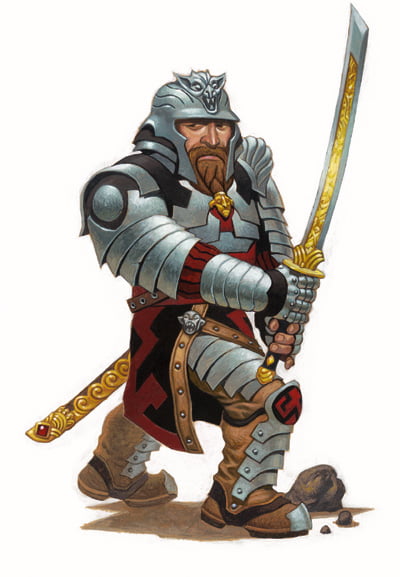
Kobolds As Convergent Design
I’ve spoken about the role of the Goblin on Cobrin’Seil, but what about the kobold? I did bring up the question of hey why are these two so alike? And the followup question of where do they come from? The answer to both is ‘authors are weird,’ but I’m looking at it more in terms of how I can build and shape the world I’m putting players into, and I want the kobolds there to be both interesting enough as a player option without depriving people of the opportunity to use easy content where kobolds are happy to try and stick spears in players.
I am a fan of thinking about cultures in terms of their places in the world. That often requires answering the question ‘why are they here?’
Why then, are kobolds here?
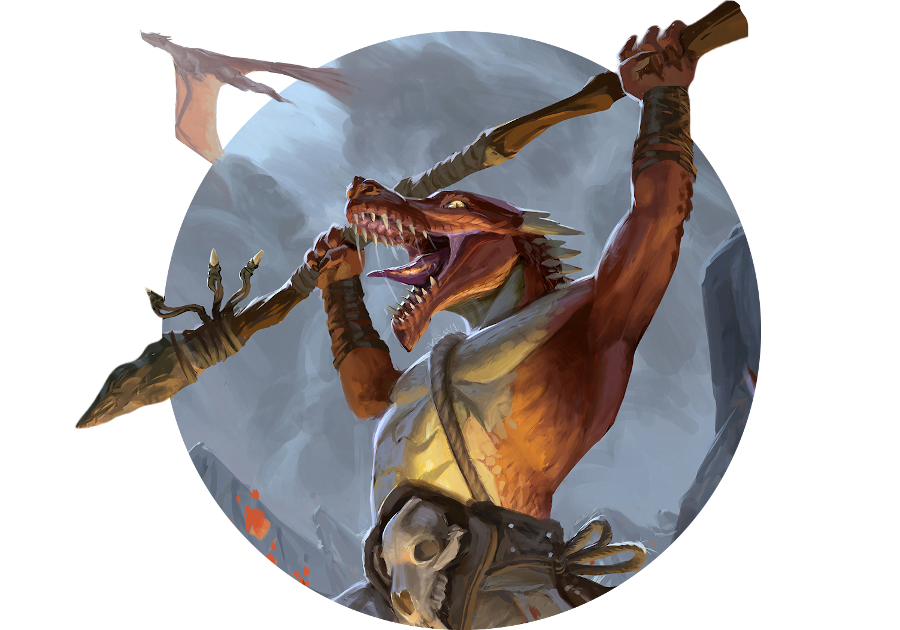
The Goblin As Fracturing Culture
I’ve spent some time considering the role of goblins and kobolds in D&D worlds, but stopped short of making decisions as they pertain to my own setting of Cobrin’Seil. It’s interesting that the idea of dispensing with both cultures was never really on the table, and I think part of that is because they do serve such a rudimentary purpose that dropping them wastes a lot of pre-existing material. It’s not like ignoring Duergar with their awful name, which drops maybe five instances of useful monster design across all editions; goblins are used in a lot of spaces and just the presence of them is a useful, handy thing for a lot of encounter designs. If you need a low-level threat, goblins are great.
What I want to do is address what they are. It’s not enough to just go ‘they’re a monster race,’ because that… doesn’t make any sense at all when you look at Cobrin’Seil and its approach to the world. I jettisoned the dwarves entirely because they don’t do anything (did I ever write about that?), so what are goblins as a culture.
Continue Reading →4E: The Hadalan
… And there, in the deepest and darkest of spaces, far from the prying eyes of those who would judge their work, or steal their designs, a god whose name is lost, did render the form of what it had seen, and sought to make its own.
It made what it thought it saw, when it saw humans.
And when it saw what it had done, it was revolted, and fled.
The Hadalan are a rare culture from the deep oceans of Cobrin’Seil. There are people of the seas – not like the cultures of merfolk and triton, that live up near the continents, building cities at the edges of the shelf where the land falls away into dark ocean. The Hadalan are from deep in the ocean; from places where vents in the earth belch bubbles and plumes of smoke into an uncaring darkness, where great bugs sift the sands, and where the dead bones of ship and whale alike lay in the muck, too cold and dark and barren to rot.
There are stories of the Hadalan. It’s said they are people who do not have souls. When seen from a distance, their shapes are hazy and indistinct, sailors say; they change shape and morph into strange and inhuman forms. Some say they eat souls, feasting on life to life to extend their own.
And there are the stories they tell of themselves.
The Hadalan, when asked, tell stories about how they were created without souls. About how they were abandoned by a god, who was horrifed at having made them. About the way they refused to die, and made their home in the deep oceans, with the deeper secrets. About glowing libraries and columns of fire that burn in the darkness of nowhere. About how they built a civilisation; how they learned to create their own souls; how they learned the ways to call upon gods.
How they called for their god, grown, whole, and a culture to be proud of.
How their god came to them.
And they tore them apart.
Continue Reading →3.5 Memories: The Necropolitan (That Fucks)
Ever type out the title of an article, and look at it and go: Well, I can’t change that now.
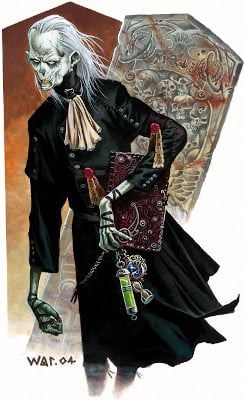
How To Be: Kuchiki Rukia (in 4e D&D)
In How To Be we’re going to look at a variety of characters from Not D&D and conceptualise how you might go about making a version of that character in the form of D&D that matters on this blog, D&D 4th Edition. Our guidelines are as follows:
- This is going to be a brief rundown of ways to make a character that ‘feels’ like the source character
- This isn’t meant to be comprehensive or authoritative but as a creative exercise
- While not every character can work immediately out of the box, the aim is to make sure they have a character ‘feel’ as soon as possible
- The character has to have the ‘feeling’ of the character by at least midway through Heroic
When building characters in 4th Edition it’s worth remembering that there are a lot of different ways to do the same basic thing. This isn’t going to be comprehensive, or even particularly fleshed out, and instead give you some places to start when you want to make something.
Another thing to remember is that 4e characters tend to be more about collected interactions of groups of things – it’s not that you get a build with specific rules about what you have to take, and when, and why, like you’re lockpicking your way through a design in the hopes of getting an overlap eventually. Character building is about packages, not programs, and we’ll talk about some packages and reference them going forwards.
In Bleach, one of the most central characters to the early narrative is one Rukia Kuchiki. Introduced in the first episode, she is the bridge of our previous point-of-view character into the spirit world as an outsider. She is a character from another world, deprived of powers in our world, who has to guide Ichigo, a seemingly ordinary dude who can see ghosts, into seeing the immensely complicated reality that spiderwebs about him about societies full of special rules and seemingly arbitary boundaries. Rukia is this sort of mix of gremlin energy, doing things like building a micro room in Ichigo’s closet, ostentatious self-importance due to her noble heritage, and very legitimate expertise in spiritual matters. It’s the sudden loss of Rukia that marks the transition between the first two major arcs of Bleach, where all the fun we’ve had up until now is suddenly framed as something you have to pay for. The society, the life, the world that is waiting outside of the fun of highschool appears and demands that all that fun is over and now there is a duty.
I assume at some point after that she gets super powers and reunites with Ichigo and they have cool adventures and the story doesn’t run in place for nine years.
Anyway!
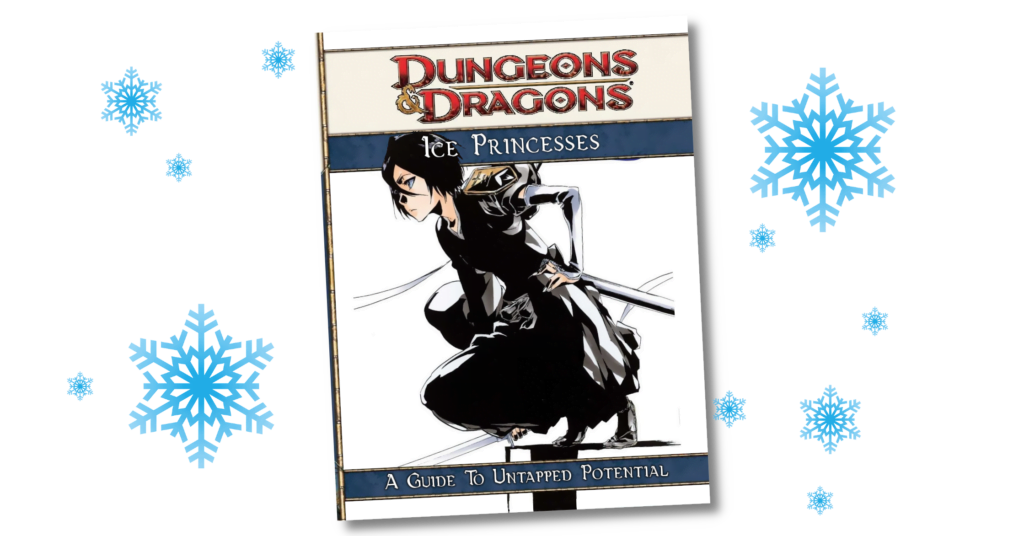
How To Be: May (in 4e D&D)
In How To Be we’re going to look at a variety of characters from Not D&D and conceptualise how you might go about making a version of that character in the form of D&D that matters on this blog, D&D 4th Edition. Our guidelines are as follows:
- This is going to be a brief rundown of ways to make a character that ‘feels’ like the source character
- This isn’t meant to be comprehensive or authoritative but as a creative exercise
- While not every character can work immediately out of the box, the aim is to make sure they have a character ‘feel’ as soon as possible
- The character has to have the ‘feeling’ of the character by at least midway through Heroic
When building characters in 4th Edition it’s worth remembering that there are a lot of different ways to do the same basic thing. This isn’t going to be comprehensive, or even particularly fleshed out, and instead give you some places to start when you want to make something.
Another thing to remember is that 4e characters tend to be more about collected interactions of groups of things – it’s not that you get a build with specific rules about what you have to take, and when, and why, like you’re lockpicking your way through a design in the hopes of getting an overlap eventually. Character building is about packages, not programs, and we’ll talk about some packages and reference them going forwards.
You may remember that we’ve looked, earlier in the year, at the character Rock Howard, from Garou: Mark Of The Wolves. Fight games are rich fodder for this kind of exercise because they so often about what a character is and less about what the character does. Simply put, fight games don’t make much sense.
There’s a scale at work, of course. Some games make more sense, with a deliberate intention to ground the storytelling in something serious. Some games, on other hand, are pretty silly, and don’t really care about how silly they get.
Anyway, Guilty Gear.
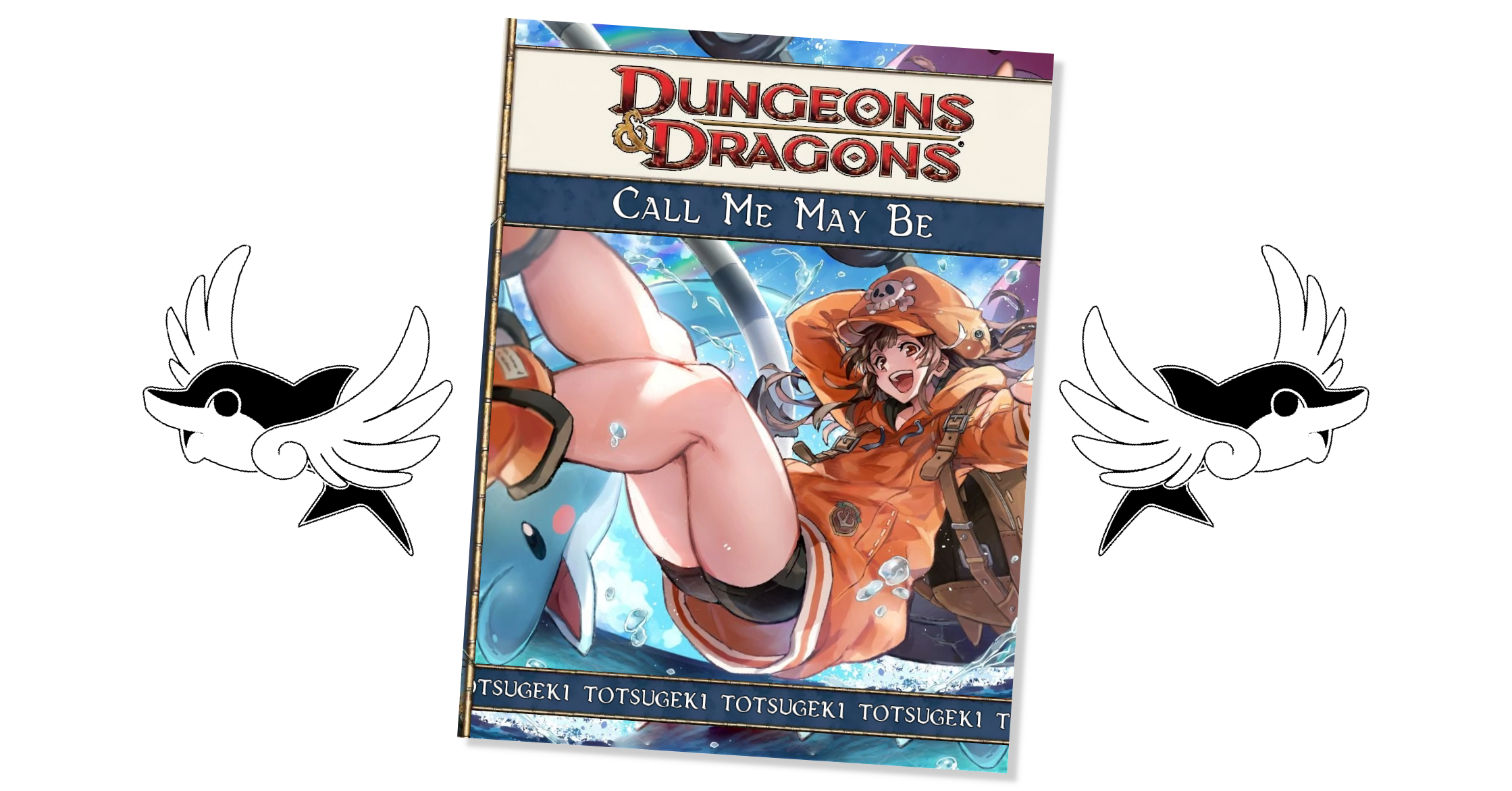
4e: Methods & Practice
Here’s a valuable lesson for tabletop RPG designers of all kinds I want you to learn from 4th edition D&D. I’ve been brewing on it for a while and I think I can summarise it cleanly thus:
Methods & Practices should not be Entangled.
There, that’s it, that’s the tweet.
… And I guess I should explain it more.

Game Brief: The Many Complications of Fogge’s Barrow
I’m running a D&D game right now. Uh, unless something’s gone very wrong, I’ve been running it for some time by the time this guide goes up. But when I make a game I start out by giving people a document, called a Game Brief, that gives them guidance on building characters, and what’s expected of them.
For this game, I knew I had a small party (only three players), because we’d be playing this when our fourth friend was absent from the game. I also knew I didn’t want a huge stake, and wanted it to be much more about something local without big potential impact, so I put it in the mid levels of Heroic. Enough room that players could play experienced characters, but not that they had a veritable tale to them yet.
I’m going to present the brief, as I started on it… and then talk about the complication that followed.
Continue Reading →3e D&D: SONIC FIREBALLS
In the pantheon of D&D spells, there’s nothing, it seems, more iconically important to the identity of the game than ‘fireball,’ a spell that apparently nobody ever anywhere would come up with without D&D bringing it to their attention. Hm. Bit sarky there, I should come back at that again. Anyway, Fireball! What a great spell! A classic, a powerhouse, a spell that always comes quickly to the fingertips and that players love to hear when the wizard is about to start some shit with a fireball.
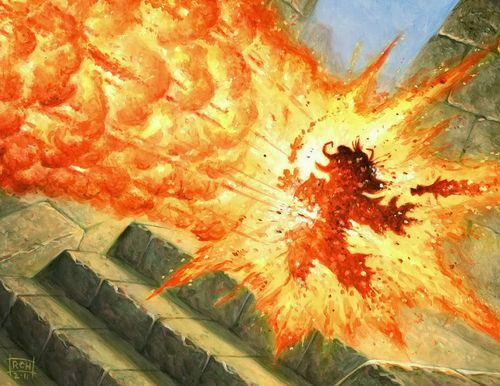
Anyway, you’d never bother casting it in 3rd edition D&D.
Continue Reading →How To Be: Disney’s Robin Hood (in 4e D&D)
In How To Be we’re going to look at a variety of characters from Not D&D and conceptualise how you might go about making a version of that character in the form of D&D that matters on this blog, D&D 4th Edition. Our guidelines are as follows:
- This is going to be a brief rundown of ways to make a character that ‘feels’ like the source character
- This isn’t meant to be comprehensive or authoritative but as a creative exercise
- While not every character can work immediately out of the box, the aim is to make sure they have a character ‘feel’ as soon as possible
- The character has to have the ‘feeling’ of the character by at least midway through Heroic
When building characters in 4th Edition it’s worth remembering that there are a lot of different ways to do the same basic thing. This isn’t going to be comprehensive, or even particularly fleshed out, and instead give you some places to start when you want to make something.
Another thing to remember is that 4e characters tend to be more about collected interactions of groups of things – it’s not that you get a build with specific rules about what you have to take, and when, and why, like you’re lockpicking your way through a design in the hopes of getting an overlap eventually. Character building is about packages, not programs, and we’ll talk about some packages and reference them going forwards.
This month, I felt it was time to approach the challenge from a different angle, of taking something with an obvious, easy, simple solution and then exploring around that. And for that, we’re going to look at a classic character, a character who’s so well known we don’t even remember we’re referencing him when we reference him. A folk hero, a hero who defined a generation and set thousands of people on their path that would determine the kind of person they’d be.
We’re going to look at Robin Hood.
Specifically, the 1973 Disney’s Robin Hood.
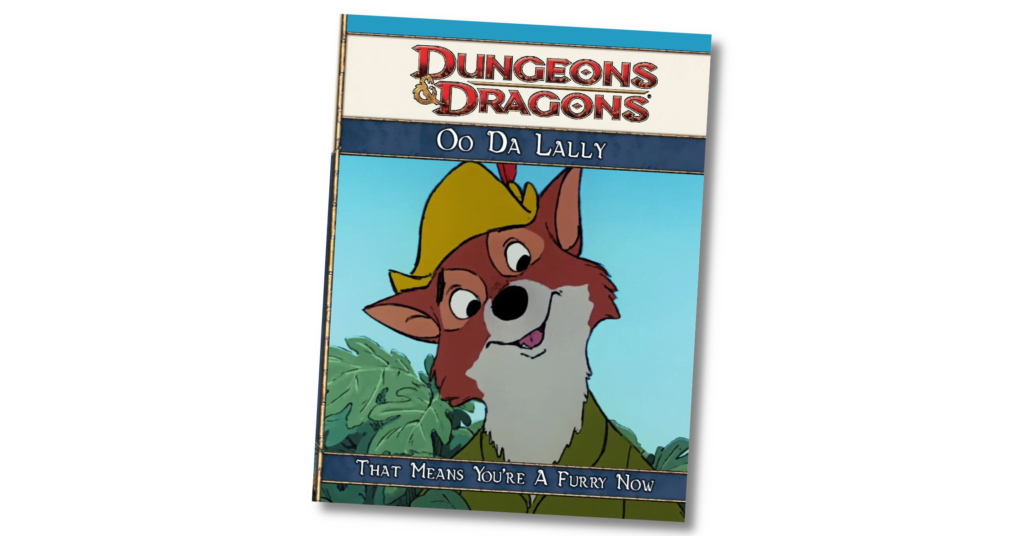
3.0 D&D: Everyone Shapeshifts
Min-maxed 3.0 D&D was fucking weird.
I use the term 3.0 to talk about ‘third edition’ because there’s this weird way that people treat ‘3rd edition’ D&D as a single game, and not a period of time between the last release of 2nd edition and the first release of 4th edition. 3rd edition content is still being made and the game is still being played, even if I’d moved on from it. Important to this, though, is that ‘3rd edition’ is a term that I feel inappropriately ambiguates the two games made in 3rd edition.
When people are criticising 4th edition — hey maw he’s defending 4th edition gain — sometimes you get a ‘timeline’ argument; the idea that 4th edition, as a game that was only actively published and promoted for six years before the introduction of 5th edition. 5th edition has been going for 7 years since then (two of which were pandemic years), and 3rd edition went from 2000 to 2008, showing that 7 and 8 years are ‘good’ times for a game to exist, and 4th edition’s 6 years indicate that it was a ‘bad’ time. Thing is, 3rd edition D&D, the thing before 3.5, was only around for 3 years, and it was not the same game as 3.5. You couldn’t just pick up classes, creatures, or monsters and port them over. First party feats and classes were generally all weaker than 3.5, and spells were largely stronger.
4th edition never released a supplement that wasn’t compatible with all of 4th edition. By comparison, 3.0 lasted for 3 years, and 3.5 lasted for four – an immense rules patch apology.
And trust me, it was an immense rules patch.
Like, did you know in 3rd edition, in min-maxed groups, you basically never bothered building for physical stats if you were starting after level 3 or so?
Because in a min-maxed party, you very rarely were dealing with un-polymorphed characters.
Continue Reading →4e: Sneaky Feys
It’s said, that humans learned magic from the gods; some say that humans learned it from studying the universe around them. Some, in the oldest and darkest stories, say that humans learned magic from the fey, because they couldn’t wait to see how badly we fucked it up.
One thing I love about D&D 4e is the way that making a character is pretty simple and robust. Rather than gate things like werewolves and werebears behind layers of power back in third edition, the game finds ways to let you play that straight up, out of the gates. Same with Vampires, and, if you want, you can play all sorts of weird character types out of nowhere.
If you want to play a weirdo, fae-realms inspired fey creature, you have options too! And, of them, the Satyr and Hamadryad, are bad. Fortunately, though, Fox made some better ones, and I’m going to give you some feat support for them!
Now, this is a bit of a different direction in the kind of 4e content I make. This isn’t about something from established books, this is something based on the character heritages for 4th edition that Fox made. It’s going to be about feat support for the Gruuwar, Pooka, and Firbolg heritages she wrote, and put up on The Square Fireball.
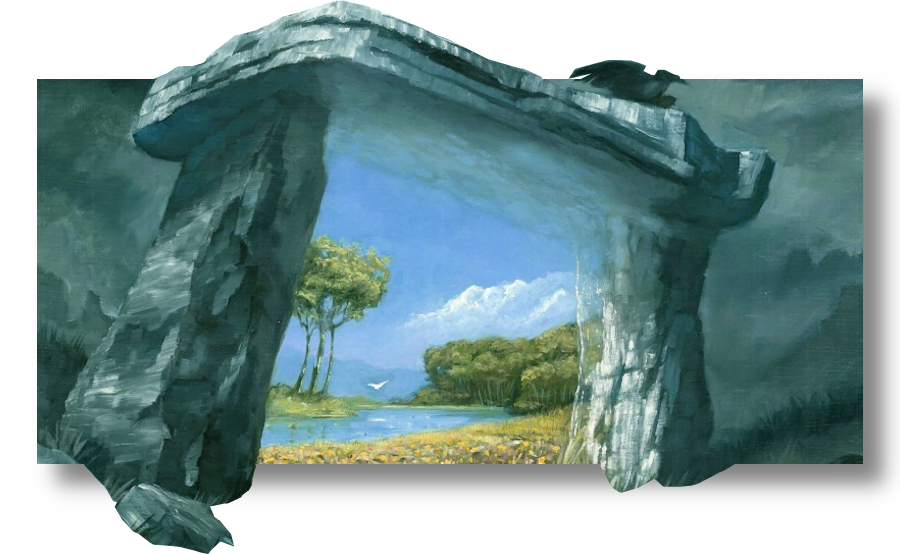
How To Be: Goliath from Gargoyles (in 4e D&D)
In How To Be we’re going to look at a variety of characters from Not D&D and conceptualise how you might go about making a version of that character in the form of D&D that matters on this blog, D&D 4th Edition. Our guidelines are as follows:
- This is going to be a brief rundown of ways to make a character that ‘feels’ like the source character
- This isn’t meant to be comprehensive or authoritive but as a creative exercise
- While not every character can work immediately out of the box, the aim is to make sure they have a character ‘feel’ as soon as possible
- The character has to have the ‘feeling’ of the character by at least midway through Heroic
When building characters in 4th Edition it’s worth remembering that there are a lot of different ways to do the same basic thing. This isn’t going to be comprehensive, or even particularly fleshed out, and instead give you some places to start when you want to make something.
Another thing to remember is that 4e characters tend to be more about collected interactions of groups of things – it’s not that you get a build with specific rules about what you have to take, and when, and why, like you’re lockpicking your way through a design in the hopes of getting an overlap eventually. Character building is about packages, not programs, and we’ll talk about some packages and reference them going forwards.
This month, we’re going to look at a challenging build; we’re going to be looking at a powerhouse of muscle and stone, in the form of Goliath from the Disney series Gargoyles.
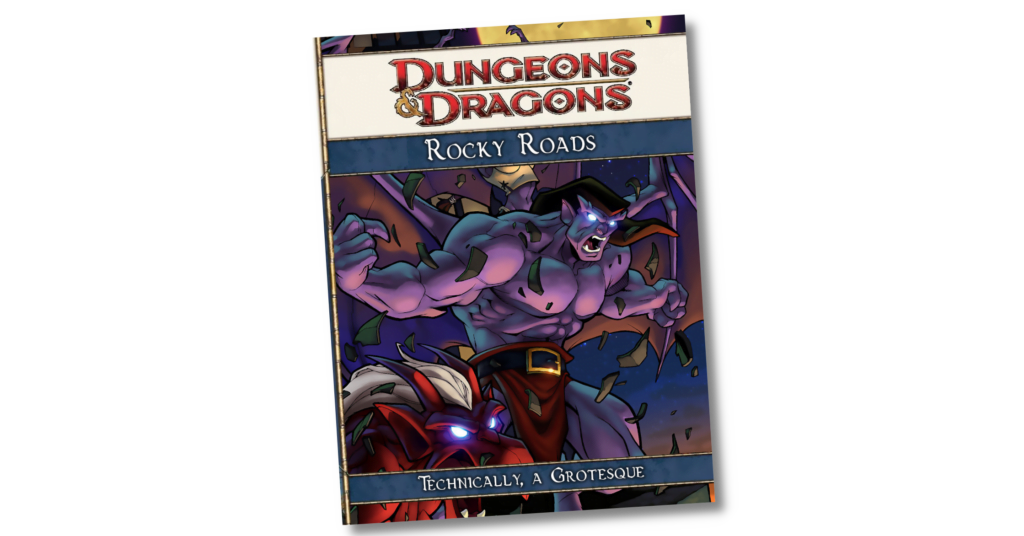
3.5 Memories: The Struggles Of The Hexblade
We’ve spoken before about how the wizard and sorcerer presented a sort of top-and-bottom of the top tier of D&D 3.5’s utterly unbalanced nonsense space, and it’s something of a storied matter of lore that the Fighter represents a most obvious terrible class. It creates a pretty simple narrative that spellcasters are great and melee damage dealers are ass. This isn’t totally right – after all, the Truenamer, the worst D&D class, period, is a spellcaster, and there are classes that are primarily melee damage dealers that aren’t underpowered compared to standard enemy content.
But it does hold, generally.
The core rules brought with it a set of three arcane casters and four divine spellcasters. Of those divine spellcasters, two were what we call ‘full’ spellcasters – they cast spells at level 1, and every level their spells get better – and were the Druid and the Cleric, two of the most stupidly powerful classes in the game. The other two were the Paladin and the Ranger, who had a pretty interesting structure; both were full-base attack bonus classes, with special abilities that made them better in melee combat, and after level 4, they started to get a small number of spells that gave them a lot of potential options. And honestly, the Ranger and Paladin were pretty damn good. They weren’t the worldshakers that the primary spellcasters could be, but if you wanted to hang in their parties, you were at least going to get interesting choices and could do some cool things.
But what if there was an arcane class that was templated off the Paladin and the Ranger?
What if there was a melee-capable class that got arcane magic and special powers to round out their flavour space?
Well, there was.
Presented in the Complete Warrior, we got our Arcane Paladin-Ranger-type.
It was the Hexblade.
And it suuucked.
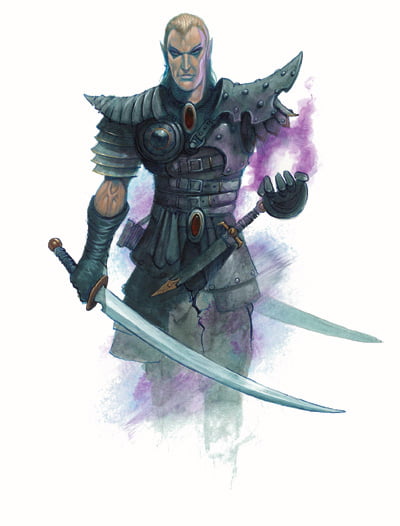
4e: The Swallowers
There are tales told, in the deep and dark places of the world, about vast, floating multi-eyed magical monsters, their minds full of hate, seeing a world of imperfection and foulness that they refuse to abide, wanting to reshape and destroy it all at once. There are tales told about their variations and mutations, things that they see as vulgar but necessary – smaller versions of themselves, foul mutations and permutations.
But there are other variations, ones they don’t mean to make.
Swallowers are chaotic, anarchic creatures, who look like the famously powerful tyrants of the underdark, but sharing none of their ambition and hate. Instead, what they have is curiosity, bubbling up from within as they bounce and float around the world, exploring the world.
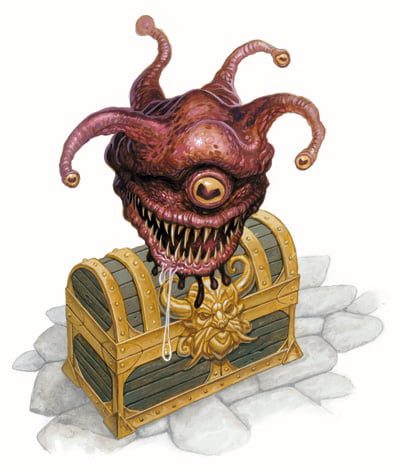
How To Be: Daryun (in 4e D&D)
In How To Be we’re going to look at a variety of characters from Not D&D and conceptualise how you might go about making a version of that character in the form of D&D that matters on this blog, D&D 4th Edition. Our guidelines are as follows:
- This is going to be a brief rundown of ways to make a character that ‘feels’ like the source character
- This isn’t meant to be comprehensive or authoritive but as a creative exercise
- While not every character can work immediately out of the box, the aim is to make sure they have a character ‘feel’ as soon as possible
- The character has to have the ‘feeling’ of the character by at least midway through Heroic
When building characters in 4th Edition it’s worth remembering that there are a lot of different ways to do the same basic thing. This isn’t going to be comprehensive, or even particularly fleshed out, and instead give you some places to start when you want to make something.
Another thing to remember is that 4e characters tend to be more about collected interactions of groups of things – it’s not that you get a build with specific rules about what you have to take, and when, and why, like you’re lockpicking your way through a design in the hopes of getting an overlap eventually. Character building is about packages, not programs, and we’ll talk about some packages and reference them going forwards.
We have a bit of a special one this month: Not a character I know, or am familiar with, but who has been in my life and around me for some time. We’re going to look at the character Daryun from The Heroic Legend of Arslan, a novel series some thirty-five years old, which was reimagined and reinvigorated through the heroic work of Hiromu Arakawa. So, imagine a deep, long-running heroic fantasy war epic, which then had one of the greatest living manga-ka come through and give it a bit of a brush up.
We’re going to talk about a hot prince’s best friend, who he loves so much he was buried with him (but, in a not gay way, if you believe the fandom wiki): Daryun.
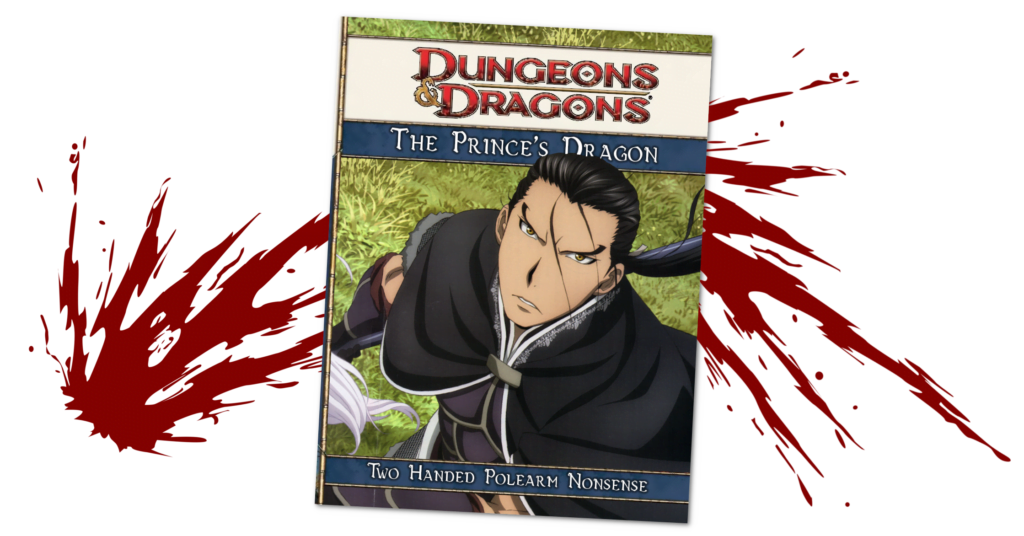
Examining Daryun
Alright, for those of you (us) not aware of this preposterous Battle Hunk, let’s have a look at Daryun, Just Daryan, No Surname, Weird. In the story he’s from, Daryun is this sort of violence elemental poured into the form of a Good Good boy, a gifted horseman and knight who, at the start of the story, suffers unfair punishment because he made a bad choice which, it turns out, was, in fact, a good choice, and the person he opposed was a traitor. As this is a story of empires, just because a decision was dumb doesn’t mean that it gets rescinded, especially because stuff went supremely sideways and kicked off the plot.
What we have to start with then is a disgraced knight who was disgraced for being too right and exiled with his prince who is too great, and how they are going to go be awesome at the rest of the empire.
I’m half kidding.
The first thing and most obvious thing about Daryun is that he’s an absolute nightmare of a combatant. In a setting full of Musou combat nonsense, Daryun is a boss monster. There are chapters of the manga dedicated to showing Daryun wrecking shop. There’s a major plot beat about the first time Arslan has to consider that Daryun can die, at least in the hypothetical. In a story full of people whose job it is to hurt people, Daryun is the Employee of the Month, Every Month, Montherfucker.
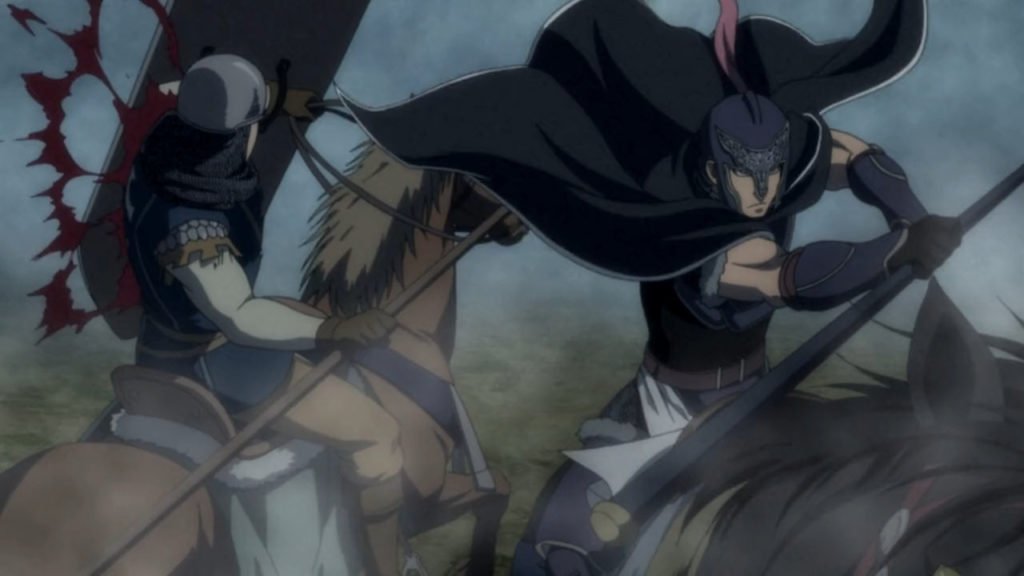
Daryun is a devoted retainer. Focal to his story is the importance he puts on protecting Arslan and enacting his aims. Fortunately for Daryun’s skillset, these aims are grotesque and overwhelming violence. Still, keep that one in mind: Daryun may be very violent and a very capable combatant, but he is also very much focused on protecting Arslan. That puts us pretty squarely towards ‘defender’ territory.
Daryun doesn’t really… do magic? It isn’t that the Arslan setting lacks for magic; there are sorcerers and wizards after all. But Daryun’s very much more about spears and swords and bows and other spears and good lord, there’s blood everywhere. That pushes us away from magical things. We might be able to squeeze in some things that are magical but don’t look like magic.
As far as abilities go, Daryun’s a bit of a risky one. See, he’s not just a combat juggernaut, but he also isn’t stupid, and he’s terrifying. Enemies that hear Daryun is coming to fight them sometimes desert. While there’s a certain greatness to him in general, it’s hard to argue he’s ‘bad’ at any particular ability score. The closest we can get is maybe the idea that he’s a little lacking in the wisdom department because of his intense dedication to Arslan, but since the ideology of how Intelligence, Wisdom and Charisma work can be nebulous, it’s probably best to just assert ‘he’s fine’ in those stakes.
This can be a good thing, of course; it can mean that any of those three mental stats that needs to be good for a build fits. It’s not like your character has to have high stats to convey the right tone, it’s just it’s best to not be markedly bad at things. Have the stats you rely on be the stats that feel right for the character.
Okay, that gives us:
- Physical combat prowess
- Ability to protect someone
- Polearms, swords and bow, if necessary
- He is feared and fearsome
Oh, and, because it’s Pride month, Daryun can’t have a shield. It’s dodge rolls only.
- No shields
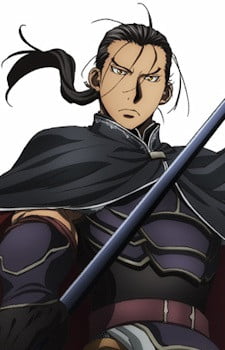
The Essential Daryun
First up: Daryun needs to be a combat beast. It’s funny this article was coming up while the current bubble of 4e Discourse is going on, where it’d be great to do an article about martial disciplines and rituals and all sorts of non-combat stuff characters can do. Instead, nope, we have a character who approaches every problem like it’s a tree made of meat that needs to be cut down and then he proceeds to do it.
Armour wise, Daryun wears heavy armour and while he’s zippy in it (because it’s a manga) you don’t have that luxury. Getting some gear to make yourself tougher and faster is fine, all the standard options for a defender are going to work here. You are going to have your boot slot taken though, for reasons we’ll get to.
Daryun is an archer and a equestrian in the original story (there’s even a funny bit where Arslan tries to use his bow and can’t draw it), but we’re going to focus on the spear build this time. Particularly beacuse the kind of polearm he uses in the manga looks like a Ji, a really cool type of thing that westerners might go ‘kinda a spear’ or ‘kinda a halberd.’ I’m told – by the Wikipedia page I just linked that it’s not really either of those things, but it’s cool and let’s go with that.
It opens the door to one of those odd little strangles of balance in 4th edition, where there is actually one of those points where a DM might go ‘huh, that might be a problem.’ It’s not that the effect is overwhelming, it’s that over time, with enough 4e players, you’re going to notice players gravitating towards it. It was a comment on the character optimisation boards that for a time there, this grouping of feats was the most commonly obtained thing, and it involved multiclassing fighter.
Which is wild.
You hear that? 4e D&D’s most commonly multiclassed option according to the character optimisation nerds was people wanting to be like the fighter.
Fucking beat that with a stick.
Anyway, Polearm Momentum is a feat from Martial Power. What it does is say that whenever you push pull or slide an enemy 2 or more squares, they’re prone at the end of that. When you look at this agnostically, that’s good. Any of your encounter powers that come with a push or a slide will throw your enemies onto their butts, and deprive them of an action on the next turn where they have to get back up from prone. Great. Then you start to think about it more, and you notice it doesn’t care about encounter powers. Or daily powers. It cares about any time you use an attack to push pull or slide.
Like your at will powers.
Like a not-insignificant number of basic attacks.
Like you can do as an opportunity action.
What happens, you may wonder, if you interrupt someone’s turn with forced movement? Well, it can interrupt their actions. Opportunity attacks happen before the thing that triggered them resolved. If an opponent provokes an attack of opportunity from you while moving past you, and your attack knocks them prone, their movement ends and they have to decide what to do after that point. Most of the time, they want to just get up, but then that’s a whole action. They can attack from prone – if they want – at a penalty. That’s pretty good – it means enemies trying to get around or past you are going to risk being knocked over and forced to fight just you.
Tacking that onto a push however, or a slide, means that you can hit someone, knock them two squares away from you and knock them over. You can use this to position opponents where literally nobody is in reach of their attacks, effectively turning off an entire turn from an opponent. That’s pretty strong! Most of the time, their best option is to get up on their own turn and, without many other options, charge someone. If you position yourself right, they might only be able to charge you. This is a lot of battlefield control, and on your own turn, odds are good you can just huck ’em backwards again. It also starts to mitigate combat damage when you throw in the feat Polearm Gamble.
Polearm Gamble lets you make opportunity attacks against someone when they enter a square next to you.
That means if they do get up and charge you, you attack them and throw them backwards again, and prone them again. Their entire turn is spent doing nothing, and you got to attack them.
This is how a single soldier can kill an army – one at a time.
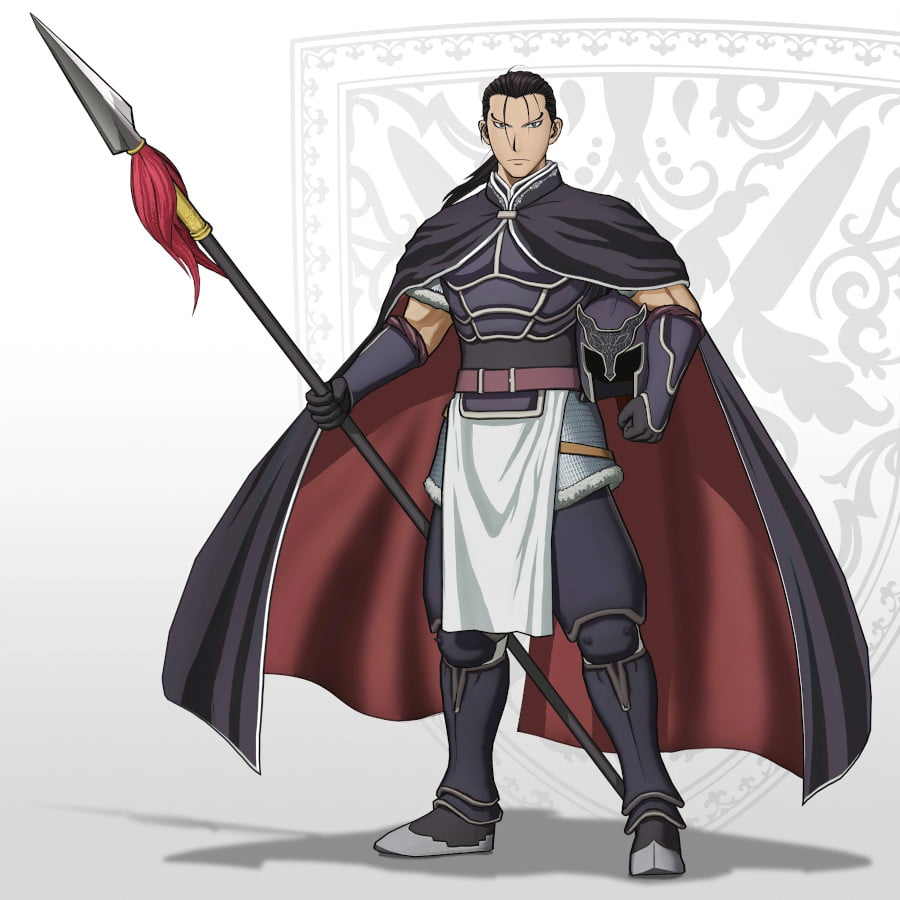
Now, in order to get this kind of effect you do need to draw some pieces together. Particularly, you want a polearm weapon. While there are a lot of options, they can require more feats; the Greatspear gives a +3 proficiency bonus but needs a feat, while the Halberd can stand in for the Ji (I know, I know). If you want to get axe benefits, the halberd will do the trick. Oh and they’re Reach weapons, so you can whack people at range to throw them around and prone them. That’s cool.
You’re also going to want a way to push or slide things for 2 squares with a melee attack that uses a weapon. That’s easy for some classes, tricky for others. Pushing one square is doable (and we’ll talk about it), and then you can augment that push with the magic item Rushing Cleats. These are a pair of boots that increase your pushes and slides by 1 square. That’s the core:
- Polearm Momentum feat
- Basic-attack power that can push or slide 1 square
- Rushing cleats
From there you unlock a lot of other possible things that make this better; for example, if you’re fighting lots of prone enemies thanks to the Polearm Momentum, and you’re using an axe-polearm like a Halberd, you may want to get Headsman’s Chop. You may want Polearm Gamble in Paragon. You may focus on proning, or forced movement, or on polearm stuff.
Also, for all these builds I’m recommending Daryun take the Guardian theme. You just need to ask someone else to provide the slender willowy prettyboy prince for you to always want to protect (happy Pride).
Representing Fear Of Complexity: Knight
This is the simplest possible build. I’m never that wild about the Knight, because while it gives you a lot of simple, straightforward power, it does so by giving you a set of player choices at level 1 that sort of just… last for the rest of the game. The Knight gains basically no benefit, at base, from Dexterity or Wisdom, but that does mean you can focus on the straightforward ‘hit things good’ stats and abilities.
At the really low levels, you can use your stance for a little advantage in damage. Now, you can start out with a race/heritage option that gives you +2 Dex and Wis, and pick up Polearm Momentum at level 1… and do nothing with it. My advice is instead, focus on getting that strength you want as high as possible, use some stat levelling up to push your Dexterity or Wisdom up high enough to qualify for the feat, and wait until level 6 to get Polearm Momentum. As mentioned above, you really want your Rushing Cleats, which you’re unlikely to have access to at level 4.
Okay, out of the box, the knight starts doing the push-people-around garbage at level 1, and it just gets worse. Next!
Representing Fear Of Flexibility: Fighter
The Fighter gives you a lot more choices and a lot more flexibility. It also has to do some chicanery to have a basic attack with a push or slide on it. Now, you can chase up the old standby from the Thor article, with Mark of Storm and a Lightning weapon. That’ll do a fighter (and anyone else really). But even simpler than that is the Fighter Weapon Talent (which gives you a bonus to hit), and then throw in Forceful Weapon Opportunist (which means you push on all opportunity attacks, regardless of the power used to get them).
But the fighter gets to make more with its shifts and slides when it gets rushing cleats, too, because of a lot of different push-pull-slide powers you can pick up as you go. As a reliable At Will, I’d recommend Tide Of Iron, which lets you drag a thing multiple squares – and two or more squares of slide can be the difference between being flanked or not, and it lets you make choke points for your enemies.
Representing Fear Of Fights With Daryun: Battlemind
Alright, so here’s the awkward one. See, the Battlemind doesn’t get an opportunity attack with a push; but it does get a lot of at-wills with pushes. The one I recommend up front is Bull’s Strength, which is both thematically cogniscant with Daryun but also just can turn into an immense whoah that knocks people down in a great big group.
What’s more, the Battlemind gets to build around Constitution, and can get benefits from Wisdom and Dexterity. You will need to multiclass as a fighter. Wrathful Warrior will cover you there, and it also only cares about having a good Constitution. Great stuff!
Now this build is pretty stuffed in Heroic, and it doesn’t get to do the opportunity control until you hit paragon – but once you do, suddenly you just become something terrifying. You’ll want Heavy Blade Opportunity and a Polearm that counts as a polearm and a heavy blade (hiya, Glaive!), but once you do that, you’ll be Bulls Strengthing people around off-turn, teleport around with Lightning Rush and hey, maybe even Brutal Barraging people, as a treat.
Also the Battlemind is just one of the most anime fighters in the game. Melee attacks, barrages of attacks, teleporting to take hits before your ally does, striking someone before they strike you – it’s just such a great class for representing an ‘anime fighter’ character. It’s going to work just fine levelling up, but it’ll really get that Daryun-style Who The Fuck Is Better Than Me coherent violence ball once you start opening up at Paragon.
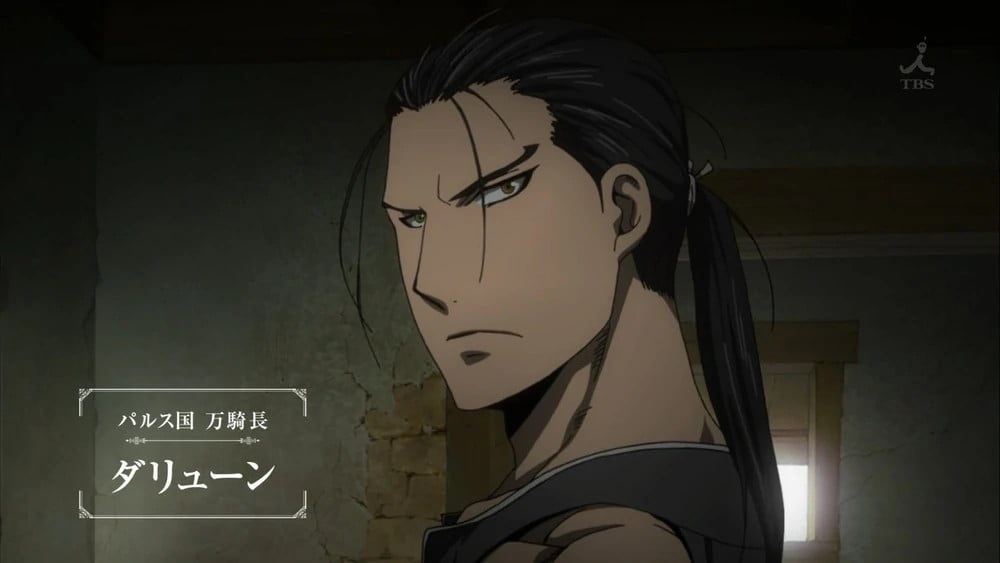
Junk Drawer Options
Now, if you set aside our idea that he has to be a defender you open up a little. The trick is what it opens up. See, Daryun could be a Ranger (you see him fighting with a sword-and-spear at times) and those are generally strong. Warlord, that works too, if you build for a lot of personal attacks and putting yourself at risk. For me, the vibe i get off Daryun is overwhelmingly tough to go with being threatening, so classes like the Rogue and Skald don’t feel like good fits. You can also make the case that a love for his lord, Arslan could be seen as an article of faith, and take him as a Crusader or Paladin, but those classes have a harder time making Polearm Momentum work in Heroic.
The Berserker, if you can handle the theme of Daryun losing his poop over something and flying into a rage, is going to do great with a polearm too. It even has a baseline at-will power for that, Savage Reach.
If you go into Paragon, though, suddenly you open up a lot of options; the Half Elf can take Versatile Master with a power borrowed from another class (like Eldritch Strike). I like that a lot, but it isn’t going to work before Paragon and that’s not how we do here.
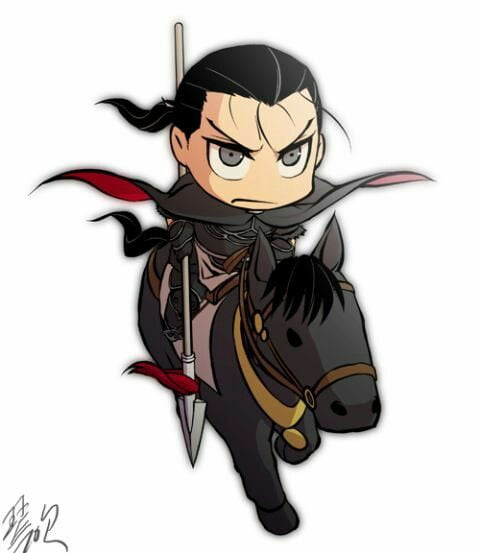
This is a long one, I know! And part of why it’s long is because the Polearm Fighter is so powerful that I wanted to present a meaningful, useful way to access it. But I think it deserves special mention that part of how this works is about people wanting to be a fighter who could reliably knock people back and knock them down, whenever they want – which is interesting, isn’t it? 4th edition giving fighters things to do that include reliable combat abilities they can do at will?
Oh well I’m sure it’s nothing.
5 Dual Wielding 4e Characters
You know what’s cool?
Dual Wielding!
No doubt your favourite professional full-time know it alls have told you that dual wielding is unrealistic and bad and sucks and deprives you of a shield, but my counterpoint is shut up nerd. And when I’m thinking about extremely cool things where the realism doesn’t matter, I think about Dungeons & Dragons: 4th Edition–
Which is the best edition.
Here then are five different ways you can wield it both ways:
Continue Reading →3.5 Memories: The Transphobia Of Unearthed Arcana
Content Warning: Mental Health, Transphobia.
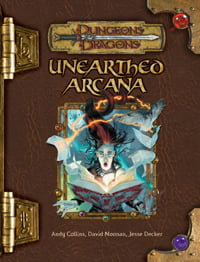
Let’s talk about effort.
Continue Reading →How To Be: Illidan Stormrage (In 4E D&D)
In How To Be we’re going to look at a variety of characters from Not D&D and conceptualise how you might go about making a version of that character in the form of D&D that matters on this blog, D&D 4th Edition. Our guidelines are as follows:
- This is going to be a brief rundown of ways to make a character that ‘feels’ like the source character
- This isn’t meant to be comprehensive or authoritive but as a creative exercise
- While not every character can work immediately out of the box, the aim is to make sure they have a character ‘feel’ as soon as possible
- The character has to have the ‘feeling’ of the character by at least midway through Heroic
When building characters in 4th Edition it’s worth remembering that there are a lot of different ways to do the same basic thing. This isn’t going to be comprehensive, or even particularly fleshed out, and instead give you some places to start when you want to make something.
Another thing to remember is that 4e characters tend to be more about collected interactions of groups of things – it’s not that you get a build with specific rules about what you have to take, and when, and why, like you’re lockpicking your way through a design in the hopes of getting an overlap eventually. Character building is about packages, not programs, and we’ll talk about some packages and reference them going forwards.
Now, are you prepared?
No.
No, you are not prepared.
We’re going to talk about how you can become Illidan Stormrage.
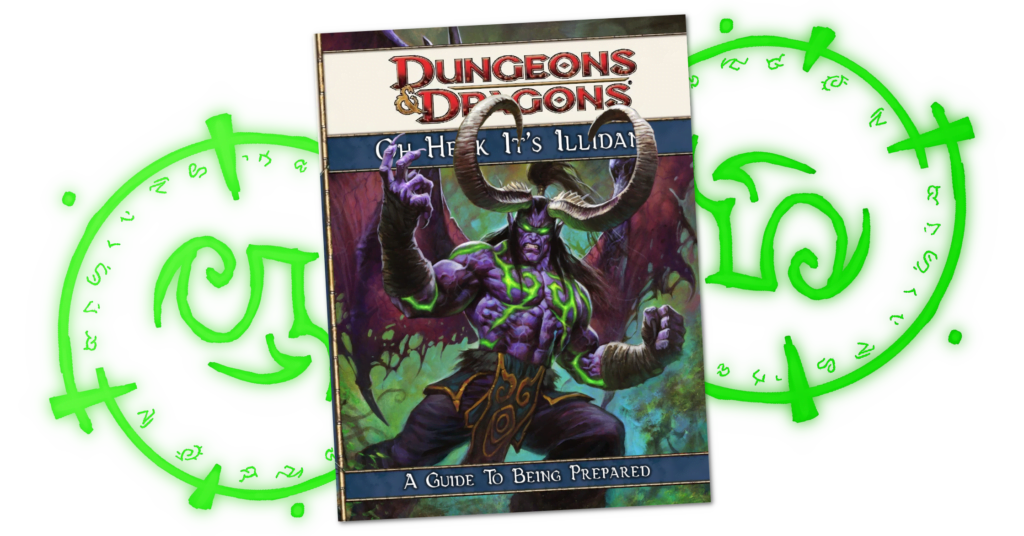
4e: Mind Control
Content Warning: I’m going to discuss some mind control stuff in ways that violates consent. Not any specific outcomes from that, but if you find the whole vibe icky, that’s what this is about.
Also, other, I guess, content warning: This isn’t about the horny topic of mind control, so if that’s the vibe you’re hoping for, sorry?
Rather what I want to talk about here is the way Dungeons & Dragons uses Mind Control across its multiple iterations and how, as tends to happen when I talk about it, 4th Edition did it in the best way.

3.5 Memories: The Palingenesis Of Xen’Drik
Content warning: I can’t help myself from bringing up the Nazis.
I’m not joking.
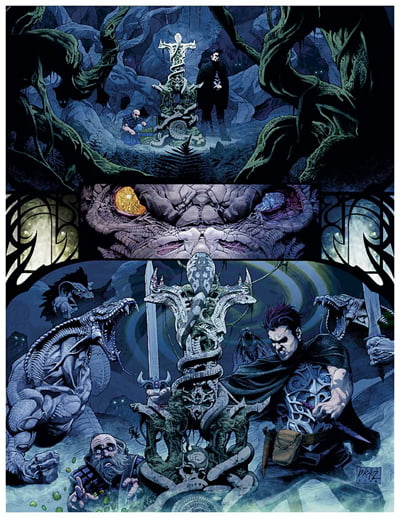
4e: The Ardent
I write a fair bit about 4th edition D&D. There’s at least one article a month, with the How To Be series, and I think they’re lots of fun. They’re exercises in character construction, working from a character aesthetic and trying to find a way to make that fit in the power boundaries and existing options of 4th edition D&D. Part of why I like to do this is to attack the idea that character creation in 4e was boring.
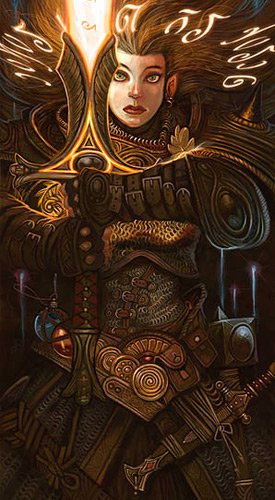
Stil, there are some things that are just… very much from D&D. They’re just things that fit within the universe of D&D as it is, and don’t really translate well to other sources. One such class is the Ardent. The Ardent is a psionic leader; it does team support, healing and buffing and positioning, but powered by the power of the mind.
Psionics in D&D has a weird place, because for some people (like me) it feels like a clear intrusion of science fiction into the fantasy landscape of D&D and therefore makes all the arcane and divine importance of magic as a discipline less important, and for some people (like me, now) that’s 100% correct and rules. Complaints about psionics from back in the day tend to be about how the system was broken not about how the system broke the fiction of the universe after all. Psionics has come to be a favourite system because it tends to be contained in a way that magic isn’t. Magic gets expanded constantly, while there’s an understanding that the psionic system is going to get a limited amount of space, and the psionic classes tend to get a small number of tools they need to make hte most out of. That creates a depth of mastery, where you want to make choices that give you a toolkit you then have to maximise, rather than the disappointing feeling of a wizard’s infinitely wide toolkit, or a sorcerer’s maximally efficient one. It strikes a middle space – and it stands apart from the wizard.
The Ardent takes this idea space and looks at psionics as a way to express the self. It is literally a romantic class (though no Ardent I’ve played has ever had a successful romance) – a class who can use their feelings, their love, their rage, their will to succeed, their excitement at avoiding an attack, and turn that into a tangible force where they can use it to punch an enemy in the face. I love this stuff – I love the idea of a literal avatar of your own feelings. It’s like the thrill of a cleric, where your ideology drives your actions, but you don’t have to have a Dad who is also a Cop on hand.
Ardents use weapons; Ardents wear armour. I like that. These are both things that will cost your character somewhat, but they get you to have a big physical expression of what kind of person they are in their aesthetic. Robes tend to be robes – but armour can look like a lot of different things. Using an axe or a hammer or a polearm or a sword – they also express different ideas. Plus, weapons have a big space of fun synergies that you can pick up if you want to find something interesting to do with your feats, but also don’t demand it.
Ardents are a Charisma-first class. That is, you make attack and damage rolls with your charisma. I wrote about them a while back, about how you can be hot and hit people with your hotness, which I still find fun. Charisma as a way to express a driven character who, whether or not they have social anxiety or stress out over public interactions, can use the force of how they feel to change the world. That’s cool!
Also, it’s a leader. I like playing defenders, because they get to be tough and I can make a big, tangible showing of what good I am contributing. I like protecting my friends. I get some of the same with the leader’s job – making people better at what they do, contributing to their wellbeing, and, with the right build, absolutely wielding the strikers in the group like a bloody blunt instrument.
They get this power? Forward thinking cut. You can fire it off in three versions:
- Hit someone. Your ally next to you gets a bonus to hit rolls. You can do this when you charge.
- Shift 1, charge, then you can hit someone, and an ally next to you gets a bonus to hit rolls.
- One or two Allies you can see can each charge creatures other than the target as a free action, with a bonus to damage equal to your con mod.
Now that, that escalated quickly.
Being able to charge in quick for free, as an at will power? that’s grand. The boost being until your next turn means you can charge next to a tank, stand in their defensive space, and watch as the bonus applies to all their attacks of opportunity or mark punishment. That power, on its own, is fine. The second version lets you shift away from someone holding you in place, and then charge off away from them, to join another ally. That’s also great, a tool you want in the toybox.
The third version is fucking nova gas.
It can be hard to concentrate these attacks – you may notice this means you, the Ardent, charge at a minion or buddy next to the villain, and you throw two of your allies at the villain as a free action so they start their turns mixing it up with them. You can use this to deploy a defender into the middle of a bunch of enemies.
Oh and did I mention that you give pepole a bonus to damage rolls based on how many attacks of opportunity they provoke?
And that this is one power?
And that you have other stuff you can do, including a conga line power where you pinball an enemy around between all your allies and let them all get an attack in?
I think about this a lot when I think about this class. It’s very D&D, but it’s also this very beautifully Tactics Game at the same time. It’s a game that lets you play out the fantasy of being a battlefield commander, inspiring and invigorating your allies. It’s so perfect for a lot of things I want out of characters I play.
Oh, I have no doubt that I’ll be able to find some builds in the future that use the Ardent. I like it a lot, and there are some characters who can probably be represented by a physically violent but emotionaly driven, armoured weapon wielder. I mean if she didn’t have such a loud ‘hit it harder’ theme, Chandra Nalaar could have done it.
How To Be: Rock Howard (In 4E D&D)
In How To Be we’re going to look at a variety of characters from Not D&D and conceptualise how you might go about making a version of that character in the form of D&D that matters on this blog, D&D 4th Edition. Our guidelines are as follows:
- This is going to be a brief rundown of ways to make a character that ‘feels’ like the source character
- This isn’t meant to be comprehensive or authoritative but as a creative exercise
- While not every character can work immediately out of the box, the aim is to make sure they have a character ‘feel’ as soon as possible
- The character has to have the ‘feeling’ of the character by at least midway through Heroic
When building characters in 4th Edition it’s worth remembering that there are a lot of different ways to do the same basic thing. This isn’t going to be comprehensive, or even particularly fleshed out, and instead give you some places to start when you want to make something.
Another thing to remember is that 4e characters tend to be more about collected interactions of groups of things – it’s not that you get a build with specific rules about what you have to take, and when, and why, like you’re lockpicking your way through a design in the hopes of getting an overlap eventually. Character building is about packages, not programs, and we’ll talk about some packages and reference them going forwards.
It’s April, it’s Talen Month, and that means we’re going to talk about a character I’ve wanted to talk about for a long time, and a character who I have a deep appreciation for. There’s not a lot of characters that fit in that mould and work well with 4th Edition’s heightened adventure reality, but when I had the idea to tackle this character, I did so with full and wholehearted knowledge that damnit, I wanted to take care of this character in my month.
We’re going to talk about how you can become Rock Howard.
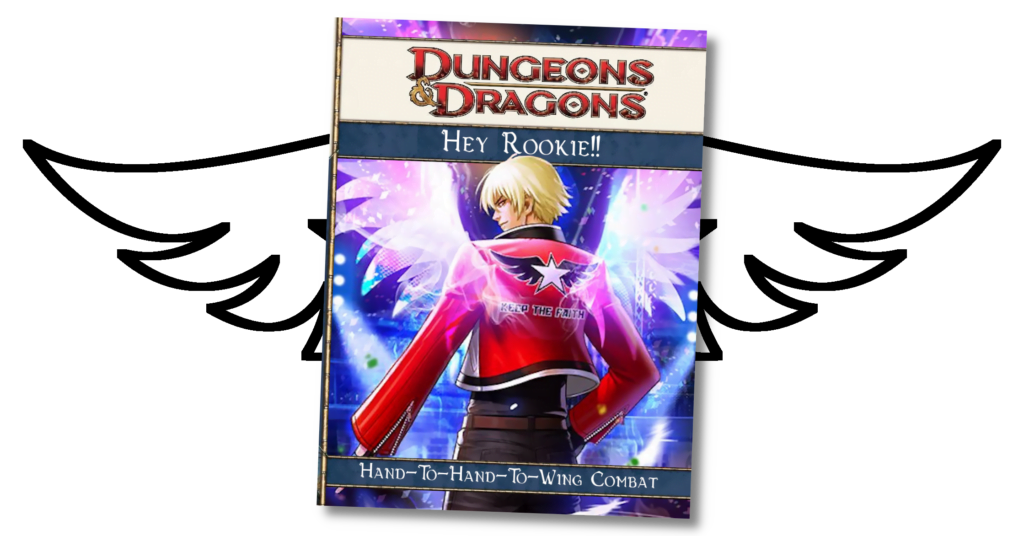
3.5 Memories: The Complete Adventurer
Before I go on to bang about something big and complicated in this book, I want to note, up front, that this book has Wraithstrike, one of my favourite 3.5 D&D spells, and which introduced the idea of spellcasters spending spell slots for short-term, immediate impact in combat, something I love and which always thrilled me when I got to play with it. If I only got this book for that one category of spell, I’d be pretty okay with it.
Just some uncritical, unvarnished, un-preambled praise.
Going back through my old 3.5 books is sometimes an exercise in wondering, in hindsight, just what exactly justified the book’s cost. At the time I was actively playing 3.5 D&D, the books were purchaseable research tools, things to leaf through and read and cross-reference. It was like getting a complex box of lego, and you could share your creations with other people.
Most of these books, I look at the spines and I have a warm thought or two. It tends to be something like oh yeah, remember how this lets you do that or that. Most any given book has an absolute dogshit class, one really embarrassingly weak thing, and one really busted thing in it. There’s always some stuff that’s, you know, decent, or stuff that becomes decent when you know what you’re doing. Basically, these books were themselves, even if never used to build a character, fun to play with.
Sometimes you’d find a book that had in it something that resisted play. Something with an obvious allure to it, but something that was hard to see how to make it work. These were often a bit like Finger Traps, kind of like Rubiks Cubes – puzzles where the impracticality of solving them was the point. Character options that asked an interesting question.
For the Complete Adventurer, the question was the Fochlucan Lyrist.
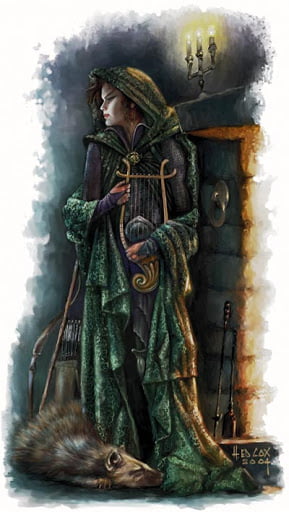
Gods of Cobrin’Seil: Faces Of War
I spoke earlier in the year about ways to view gods in Cobrin’Seil, and the story mechanisms I used to consider them. I said, at the time, that I wasn’t planning on talking more about the gods in my setting, unless there was interest. Then there was interest.
This involved digging up the text I had on these gods – the historical information for comparison. Obviously, looking back on your old writing is going to come with some problems. In this case, some of it just basic assumptions, some if it is awkward phrasing, some of it is indelicate language, and uh,
also,
I cut a title from this text for Adeblen. The original title was unremarkably edgy, and I would normally leave it in, but it uses a Content Warningy word, and there’s nothing really, like… related to it. I would normally leave the text as is and use it as a teaching moment? But like: Don’t give characters titles that include words you’re not comfortable saying at the gaming table any more. Seems pretty easy teaching.
Now, with that, here’s the old text presented for the gods Palescai and Adeblen. This text is presented as is and I’ll workshop it on the other end.
Continue Reading →
